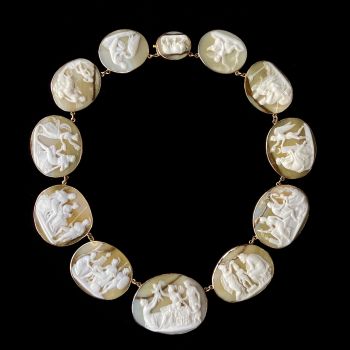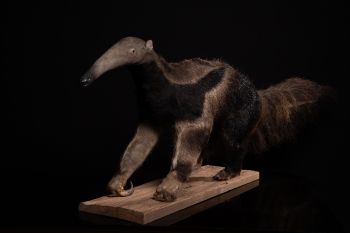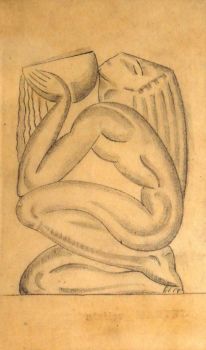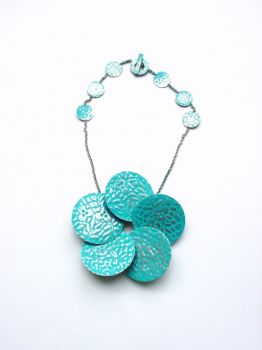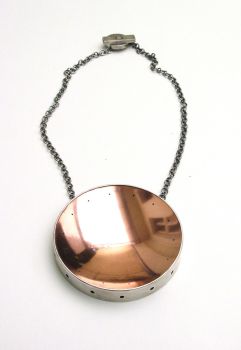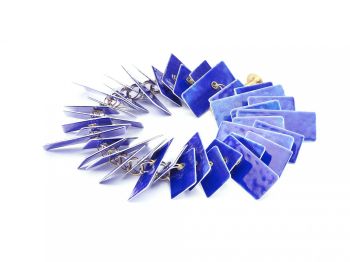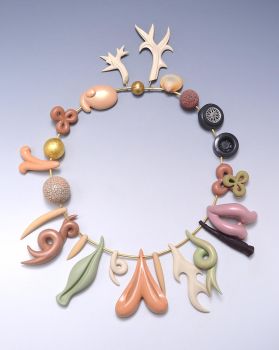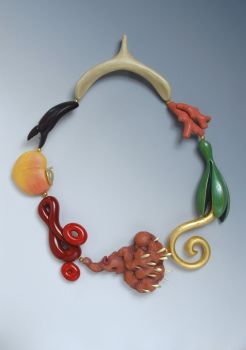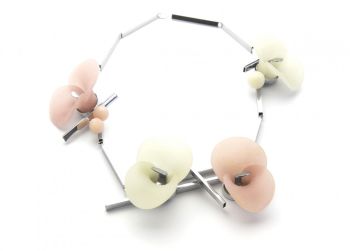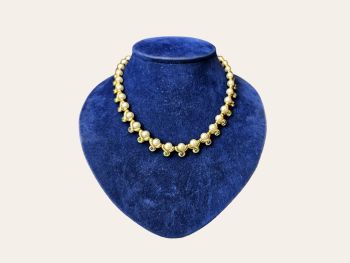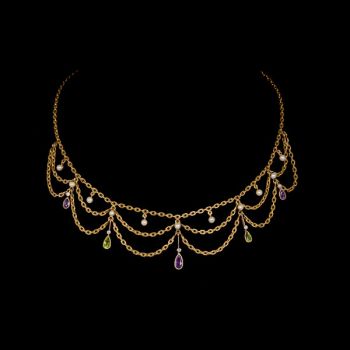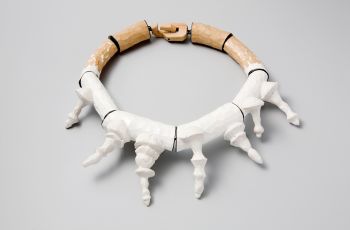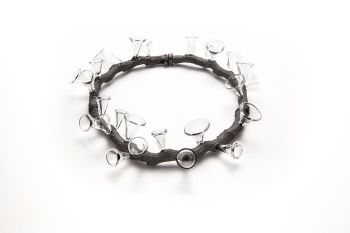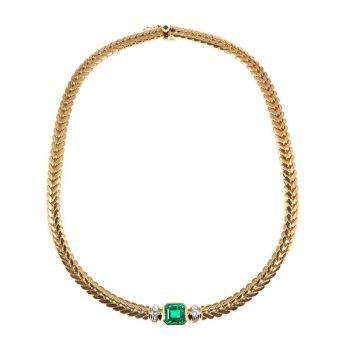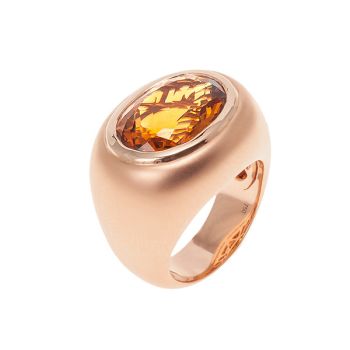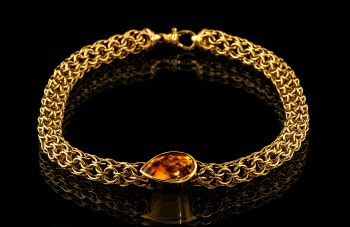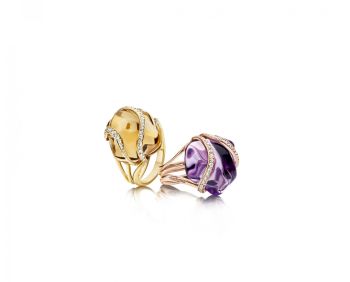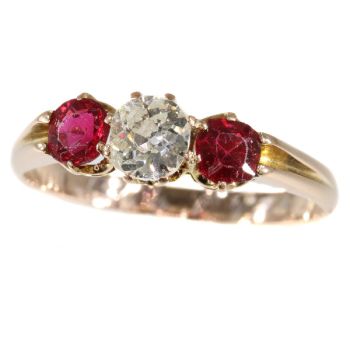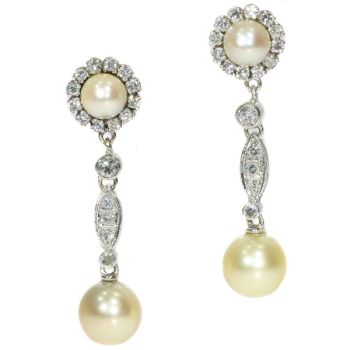Antike Halskette Gold Cannetille Filigranarbeit mit 15 großen Citrinsteinen 1820
Unbekannter Künstler
CitrinFiligranGoldEdelstein
€ 21.000
Adin Fine Antique Jewellery
- Über Kunstwerk
This fiery 18K yellow gold Georgian necklace of cannetille work folds around your neck as a gentle swirling summer breeze. Every of these 15 degrading rectangular cut citrines gleam out of their granule topped setting fused on a scintillating corona offiligree, entirely composed with tendrils, scrolls, granules and spirals. Although this delicate necklace looks as ethereal as lace, still how clear it is that it will never loose its glory and it will keep on outstanding the test of time.
Antique jewelry object group: necklace
Condition: excellent condition
- (more info on our condition scale)
Country of origin:Although it does not carry any legible control marks we believe this to be of French origin.
Style: Georgian - Georgian style is the name given in most English-speaking countries to the set of styles current between 1720 and 1840. It is eponymous for the first four British monarchs of the House of Hanover—George I of Great Britain, George II of GreatBritain, George III of the United Kingdom, and George IV of the United Kingdom—who reigned in continuous succession from August 1714 to June 1830.
- See also: Georgianor more info on styles
Period: ca. 1820
- (events and facts in 1820)
Material: 18K yellow gold
- (more info on precious metals)
Technique: Filigree (formerly written filigrann or filigrane) is a delicate kind of jewel work made with twisted threads usually of gold and silver or stitching of the same curving motifs. It often suggests lace and French from 1660 to the late 19th century. Itshould not be confused with ajoure jewellery work; while both have many open areas, filigree involves threads being soldered together to form an object and ajoure involves holes being punched, drilled, or cut through an existing piece of metal. (from: Wikipedia)
cannetille: This specific filigree technique, which is the technique of twisting or plaiting a thin gold wire into refined motifs, was popular in traditional Spanish and Portuguese jewellery. It became hugely popular in London and Paris in the 1830’s.
Precious stones: 15 citrines
- (more info on precious stones)
Birthstones: Citrine is the birthstone (or month stone) for November.
- (more info on birthstones)
Hallmarks: No trace.
- (more info on hallmarks)
Dimensions: length 46,50 cm (18,31 inch)
Weight: 72,00 gram (46,30 dwt)
Reference Nº: 14171-0037
Copyright photography: Adin, fine antique jewelry
- Über Künstler
Es kann vorkommen, dass ein Künstler oder Hersteller unbekannt ist.
Bei einigen Werken ist nicht zu bestimmen, von wem sie hergestellt wurden, oder sie wurden von (einer Gruppe von) Handwerkern hergestellt. Beispiele sind Statuen aus der Antike, Möbel, Spiegel oder Signaturen, die nicht klar oder lesbar sind, aber auch einige Werke sind überhaupt nicht signiert.
Außerdem finden Sie folgende Beschreibung:
•"Zugeschrieben …." Ihrer Meinung nach wohl zumindest teilweise ein Werk des Künstlers
•„Atelier von ….“ oder „Werkstatt von“ Ihrer Meinung nach eine Arbeit, die im Atelier oder in der Werkstatt des Künstlers, möglicherweise unter seiner Aufsicht, ausgeführt wurde
•„Kreis von ….“ Ihrer Meinung nach ein Werk aus der Zeit des Künstlers, das seinen Einfluss zeigt, eng mit dem Künstler verbunden, aber nicht unbedingt sein Schüler
•"Art von …." oder „Anhänger von ….“ Ihrer Meinung nach eine Arbeit, die im Stil des Künstlers ausgeführt wurde, aber nicht unbedingt von einem Schüler; kann zeitgenössisch oder fast zeitgenössisch sein
•„Art von ….“ Ihrer Meinung nach ein Werk im Stil des Künstlers, aber späteren Datums
•"Nach …." Ihrer Meinung nach eine Kopie (jegliches Datums) eines Werks des Künstlers
• „Unterzeichnet …“, „Datiert …“. oder „Beschriftet“ Ihrer Meinung nach wurde das Werk vom Künstler signiert/datiert/beschriftet. Das Hinzufügen eines Fragezeichens weist auf einen Zweifel hin
• „Mit Unterschrift …“, „Mit Datum …“, „Mit Aufschrift ….“ oder „Trägt Unterschrift/Datum/Beschriftung“ ihrer Meinung nach die Unterschrift/Datum/Beschriftung von jemand anderem als dem Künstler hinzugefügt wurde
Sind Sie daran interessiert, dieses Kunstwerk zu kaufen?
Artwork details
Related artworks
- 1 - 4 / 12
- 1 - 4 / 21
- 1 - 4 / 24
- 1 - 4 / 24
- 1 - 4 / 12








